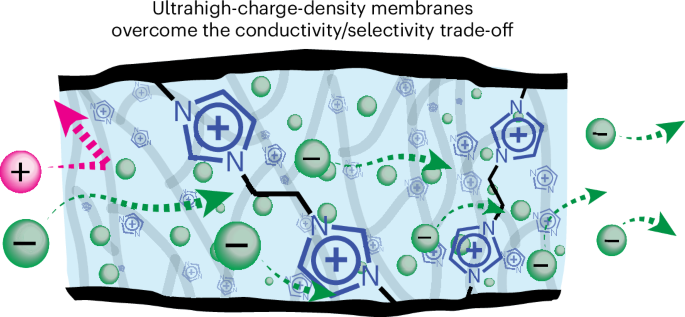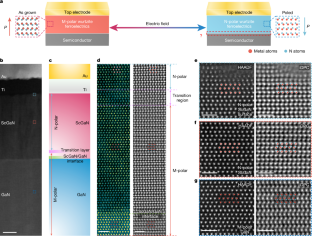2025-04-15 ミシガン大学
<関連情報>
- https://news.umich.edu/making-desalination-more-eco-friendly-new-membranes-could-help-eliminate-brine-waste/
- https://www.nature.com/articles/s44286-025-00205-x
超高電荷密度膜における高速かつ選択的なイオン輸送 Fast and selective ion transport in ultrahigh-charge-density membranes
David Kitto,Carolina Espinoza,José C. Díaz,Jacquelyn Zamora & Jovan Kamcev
Nature Chemical Engineering Published:11 April 2025
DOI:https://doi.org/10.1038/s44286-025-00205-x

Abstract
Ion-selective membranes are central to electrochemical technologies due to their ability to regulate ion transport and differentiate between cations and anions. However, a major obstacle to their effective implementation is the inherent trade-off between ionic conductivity and cation/anion selectivity, a consequence of the interdependence between membrane charge and water content. Here we introduce a membrane design strategy that not only achieves high charge densities but also nearly decouples charge from water content. Our strategy involves the copolymerization of low-molecular-weight charged monomers and charged cross-linkers, ensuring that every repeat unit of the polymer backbone contains a charged group. Anion-exchange membranes synthesized using this strategy exhibit ultrahigh charge densities, substantially advancing the conductivity/selectivity upper bound. We further demonstrate the practical implications of these ultrahigh-charge-density membranes for electrodialytic brine concentration, achieving a lower specific energy consumption than the state-of-the-art benchmark. This advancement in membrane design can impact the development and deployment of electrochemical systems across a spectrum of energy and environmental applications.



